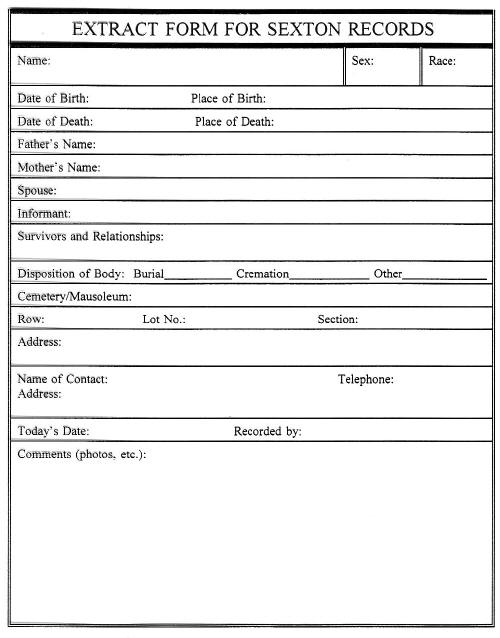In trying to find your ancestor’s cemetery, keep these items
in mind:
- It is not always possible to find a cemetery. Many have been
moved, a headstone was never erected or if one was, it may have
been destroyed.
- Not all family members may be buried in the same cemetery. Check
around the area for other cemeteries.
- Tombstones can contain errors made either by the person who
carved the tombstone or by the person who gave the information..
- Tombstone inscriptions over time can be difficult to read depending
on the script used.
Below is a typical pioneer cemetery in a western state. Notice the
vandalism, as well as new tombstones erected years after the fact
(behind the old tombstone in front).

It is also very important to be courteous in a cemetery. There
might be someone nearby who has recently lost someone and who has
come there to mourn. Speak softly, don’t walk on the graves,
but walk around them, and remove any trash you might bring with
you. Be aware of your surroundings.
Here is a little checklist of items to bring with you as you visit
a cemetery:
- Bug repellent
- Gloves
- Bottled water
- Plastic brush
- Digital camera
- Notepad and pencil
Be careful of snakes or other critters found in long grass at
inactive or any cemetery. It is a good idea to wear shoes and socks,
long slacks and perhaps bring with you gloves to pull aside weeds
in order to photograph all the words on a tombstone. Even in hot
areas, it is a good idea to bring a long-sleeve shirt or bug repellent
to ward off mosquitoes or other insects that might be found in the
grass once it is disturbed.
Sometimes you cannot read a word or letter with the position of
the sun. Yet, if you take a digital camera and set it at different
settings either with more or less light, I have found the images
better than the original viewing of the tombstone.
Below is an image taken about twelve years ago with a Polaroid
camera that was then written on in ink. Those coordinates match
a map that shows where the earliest pioneers were buried who did
not have tombstones, or their tombstones were lost.

Sometimes tombstones have moss growing on them, or mud has caked
letters or words. By taking a plastic scrub brush (like a finger
nail brush) and lightly brushing off the moss and dirt, it has helped
me to read the writing better. I usually travel with bottled water
that has been used on occasion to clean a tombstone.
Once you find the tombstone you are seeking, take pictures of the
surrounding area so you can describe this place to others. Perhaps
record the names of other prominent tombstones nearby, the road
you took to get there, and perhaps take a panoramic picture of the
surroundings.
I made up a couple of forms in WordPerfect that made it easier
to record information. Maybe you would like them as a sample.


|